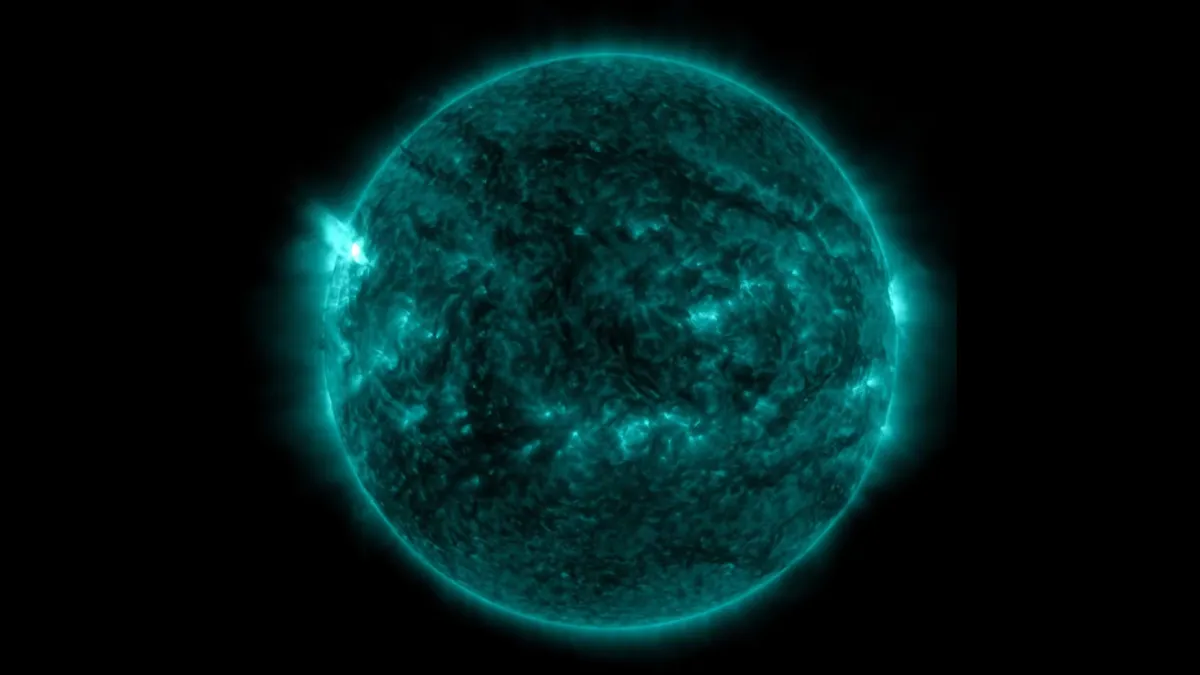
The sun has recently experienced a surge in activity, unleashing several potent solar flares and streams of scorching solar material into space. On Tuesday, May 13, a sunspot named AR4086 erupted, releasing an impressive X1.2-class solar flare, categorized as part of the most intense group of solar flares. In the early hours of Wednesday, May 14, another sunspot, AR4087, followed suit with an M5.3 flare, which was then succeeded by an even stronger X2.7 flare and an M7.7 flare just hours later. These intense solar events triggered significant radio blackouts on the sun-facing side of the Earth, affecting regions across North and South America, Europe, Africa, the Middle East, and Southeast Asia.
Solar flares are sudden and intense bursts of electromagnetic radiation emitted from areas of strong magnetic activity on the sun's surface, typically near sunspots. The sun's surface is interwoven with powerful magnetic fields, which can become twisted and tangled. When the stress on these magnetic field lines reaches a critical point, they can snap and realign, releasing a substantial amount of stored magnetic energy as a solar flare. The strength of solar flares varies significantly, and the National Oceanic and Atmospheric Administration (NOAA) classifies them into categories: A, B, C, M, and X, where each category represents a ten-fold increase in power over the previous one. The X-class flares are the most potent and least frequent.
This week’s X1.2 and X2.7 flares were on the lower end of the X-class spectrum. Notably, the strongest flare recorded in recent years was an X9 occurrence in October 2024. According to Space.com, these newly detected X-class flares are the first of their kind since March, highlighting the sun's dynamic behavior.
Solar flares can cause significant disruptions, including radio blackouts, due to the intense X-ray and ultraviolet radiation that they unleash into the Earth’s atmosphere. Normally, shortwave radio signals, which are crucial for long-distance communication, reflect off the ionosphere. However, the radiation from a solar flare increases the ionization of atoms and molecules in the lower ionosphere, particularly in a region known as the D-layer. This heightened ionization causes the D-layer to absorb radio signals, particularly those in the high-frequency range, rather than reflecting them. Consequently, X-class solar flares can lead to widespread radio blackouts across the sunlit side of the Earth, posing risks to mariners, aviators, and triggering satellite navigation errors.
In addition to the solar flares, Wednesday's X2.7 flare also produced a coronal mass ejection (CME), a massive expulsion of charged solar plasma. CMEs are frequently ejected from the sun's surface concurrently with solar flares. While solar flares travel at the speed of light, taking only eight minutes to reach Earth, CMEs typically move at speeds ranging from 250 km/s to 3000 km/s, requiring several days to arrive.
When a CME reaches Earth, its charged particles interact with our planet's atmosphere and magnetic field, often resulting in geomagnetic storms. These storms can lead to stunning auroras, as well as potential power grid failures and disruptions to satellite systems and GPS technologies. Geomagnetic storms are categorized from G1 to G5, with the most severe G5 storms causing visible auroras as far south as Florida and Texas, along with widespread power grid disruptions.
Currently, due to the location of sunspot AR4087 on the sun's northeastern limb, the CME and other solar material released by recent solar flares have not been directed toward Earth but are instead heading toward Mars. NASA forecasts indicate that the CME is expected to reach the Red Planet on Sunday, May 18, potentially generating auroras in Mars' atmosphere.
As sunspot AR4087 gradually moves across the sun, it may place Earth directly in its line of fire. Should this sunspot produce additional solar flares, we could anticipate more radio blackouts. Furthermore, if these flares are accompanied by CMEs, the likelihood of geomagnetic storms increases, which could allow auroras to be visible farther from the poles than usual. According to NOAA's Space Weather Prediction Center, there is a heightened probability of M-class solar flares occurring in the coming days, with a 65% chance of M-class activity and a 30% chance for X-class flares through May 17.